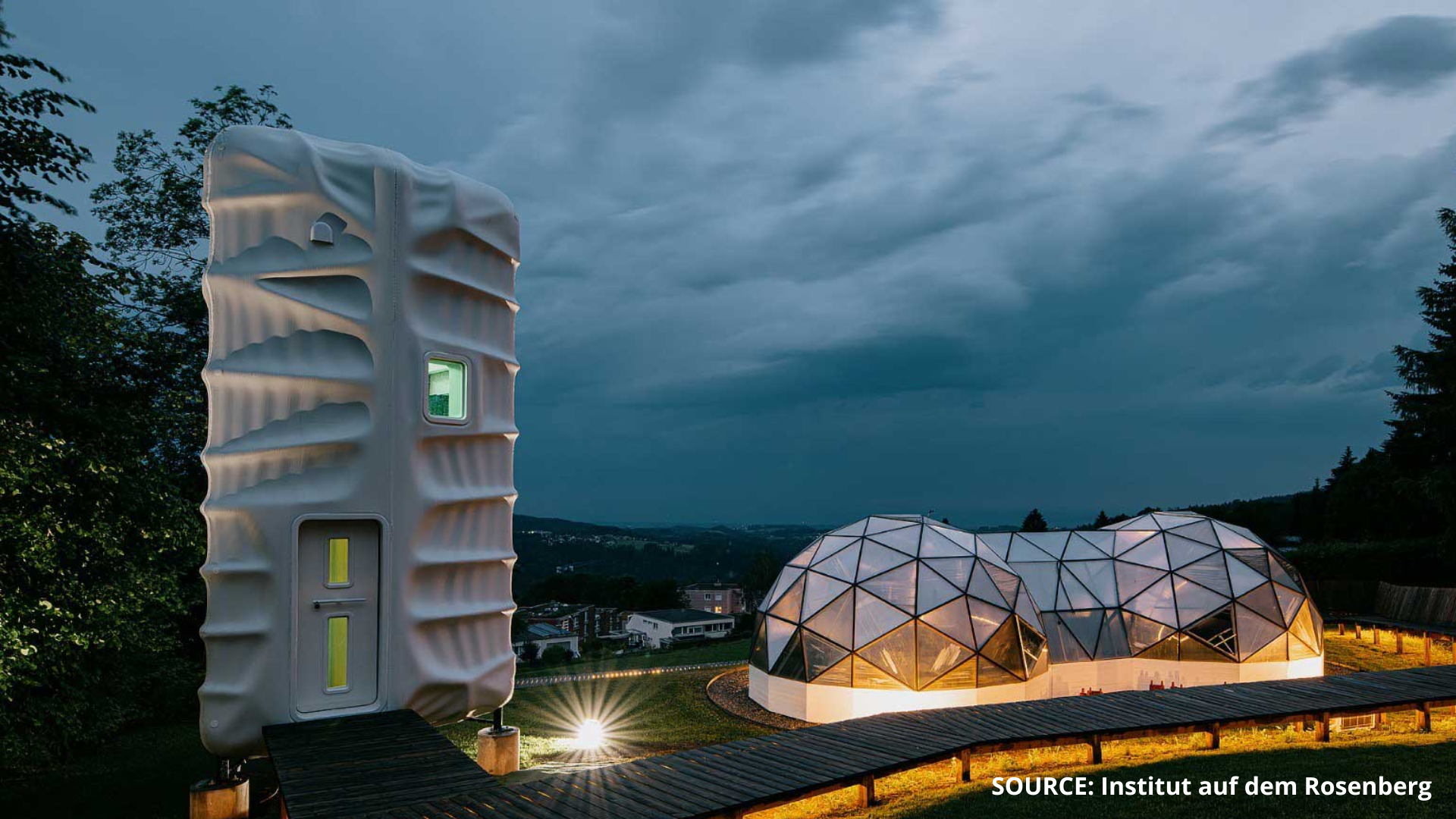
HÖHENWEG, Switzerland, July 20, 2022 — Institut auf dem Rosenberg and SAGA Space Architects unveiled the world’s tallest 3D printed space habitat, an extraterrestrial learning environment. The Rosenberg Space Habitat (RSH), which will serve as an experimental lab for students to explore and actively shape the future of humanity on our planet and beyond. Co-created by Rosenberg students and SAGA Space Architects with sustainable materials to intentionally fit inside SpaceX’s Starship rocket, the structure is the world’s tallest 3D-printed polymer structure measuring 23-feet high.
The RSH will be a site of research for students to learn about the fundamental conditions and architectural designs humans need to thrive, whether on Earth or in space. The project is based on the vision of planet-centered and need-lead innovation, teaching students not to fear new technology, but to embrace it and design it to its next generation.
“At Rosenberg, infusing education with real-life context is at the heart of what we do, rather than focusing on pure academics alone,” said Bernhard Gademann, Director General of Rosenberg. “Our aim is to provide future leaders with early exposure to the question of advanced space exploration, allowing our students to approach and solve these complex questions from a collaborative and holistic point of view.”
SAGA Space Architects and Rosenberg students (ages six to 18) closely collaborated over two years to execute the vessel’s design, which started with creative problem solving activities during SAGA Space’s Lunar mission in Greenland. Inspired by this experience, students decided to closely collaborate with SAGA to design a Rosenberg Habitat to house Rosenberg’s resident robot Spot® by partner Boston Dynamics® with initial creative concepts and paper models. The RSH’s outer shell was 3D-printed at a large scale in Milan, while the interior structure was built in Copenhagen in collaboration with high-tech partners Camozzi and Ingersol. The use of polymer in 3D printing is revolutionary, as it provides more versatility than concrete that is used in most 3D printed structures. The Rosenberg-specific recipe includes a UV stabilizer that results in a flexible, yet durable material that is recyclable – it can be broken down and reprinted into a different structure.
The three-story habitat is built to house a crew of two and is used as a hands-on research center where students can engage in immersive learning modules that activate creative problem solving. The first floor is dedicated to hygiene, lab research, and workshop facilities to use robots from other partners such as ABB for 3D or future delivery multifunctional co-bots; the second is designed for work, recreation, and entertainment; and the third is intended for privacy and rest. With mental wellbeing and sustainability at the forefront of the design, the space and Vitra furniture are designed to be multi-functional, allowing for multiple activities within the limited vessel.
Experiments conducted from the RSH will explore human well-being, using facilities to test hardware and software tools and applications, and to develop monitoring tools for remote mission control systems. Learners will also explore the importance of sensory stimulation in remote living environments with light, sound, and smell installations. Valuable experiential learning projects will enhance skills in systems-thinking by working with automated mechatronics and observing independent communication and deeper learning of artificial intelligence.
“The Rosenberg Space Habitat is state-of-the-art in analog space habitats. It was developed in record time from initial sketches to the final fully functioning habitat in just months,” said Sebastian Frederiksen, founder of SAGA Space Architects. “Furthermore, this is a great example of how working with outer space is pushing the boundaries of technology and architecture here on Earth as well, as this is the tallest 3D-printed plastic ‘house’ in the world. This is just the beginning of the habitat, and now the research and education begin. Hopefully, we are going to learn a lot about living on the Moon.”
Additional features of the RSH include a drone port and Spot®, which can go on automated walks, take photos, and collect data in the adjacent Climate Garden, a further collaboration with ETH Zurich.
The RSH is housed in Rosenberg’s self-sustaining Future Park, a state-of-the-art outdoor experimental space powered by wind trees where students can undertake projects guided by Rosenberg Artisans (teachers) and expert partners in the fields of science, technology, and design.


